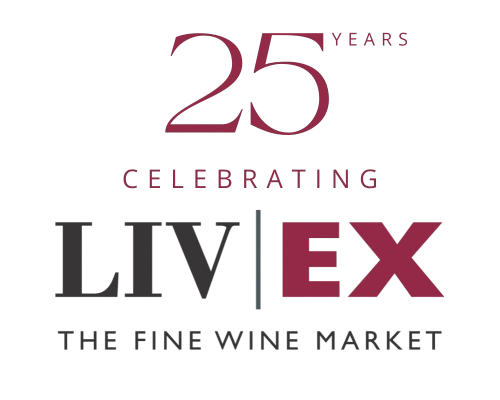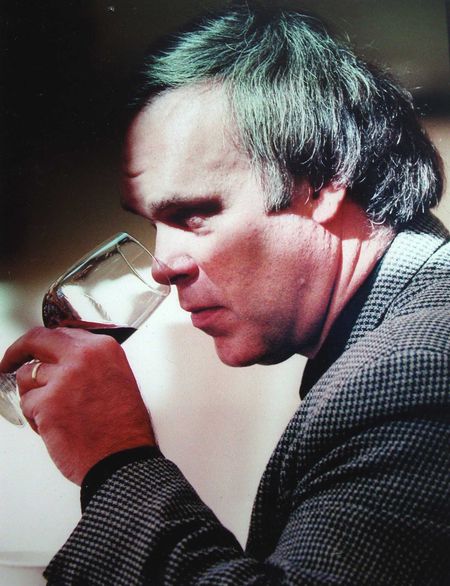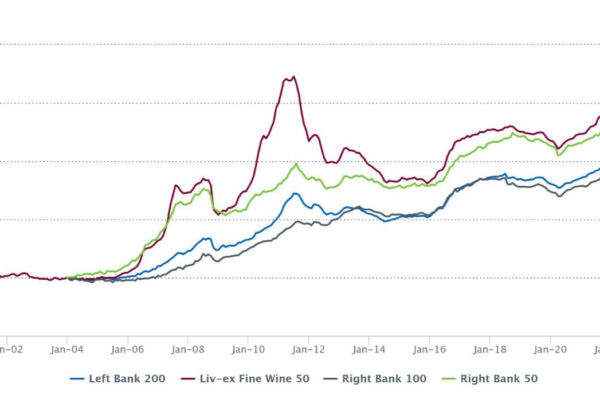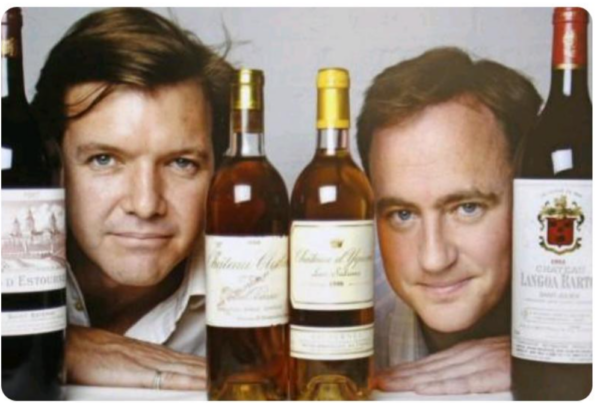Robert Parker kindly set aside some time to speak to us this week. The first part of our interview with him is shown below and focuses on the Bordeaux 2009 vintage. The second part will be published on the blog on Monday. Check back to find out which vintages Parker believes he underrated, who may take over when he eventually leaves The Wine Advocate, and his views on the Pancho Campo MW affair.
Reading your report, your enthusiasm for 2009 is immediately apparent. What were your expectations before you tasted the vintage and how long did it take for you to realise its greatness?
I think there was precedent when I tasted the barrel samples. After I first tasted the wines in March 2010, I was so enthusiastic about the quality. And though it was still early, and the wines weren’t in bottle, I thought that a lot of wines had the potential to be the best wines these estates had made throughout my professional career of 32+ years. If you looked at the initial report of two years ago carefully, I suppose you could say that all the perfect scores and high ratings were not that surprising.
There are a lot of high-quality vintages now. Bordeaux has had a tremendous run of good fortune, vintage wise, and at the same time they have made their own good luck with their commitment to quality. But it’s still the sort of vintage that we rarely see in Bordeaux; 2009 is like the high tide that raises all boats. And while people lament the fact that the First Growths have become like museum pieces – and are selling at prices that to people that have been around for 10 or more years look preposterous – there are a lot of great values in the vintage. When I came back from tasting I was telling people at The Wine Advocate about Senejac, Phelan Segur, some of the little St Emilions or wines from the Cotes – great wines that are of Classified Growth quality in 2009.
It’s no secret that I like vintages where you don’t have to wait 25 or 30 years to drink them. I think that a vintage like 2009 is in the same family style as 1982 or 1990. You have this tremendous opulence and extravagant fruit quality, a lot of glycerine, high in alcohol (more so in 2009 than in 1990 or 1982), but it is alcohol that is hidden by the concentration. At the same time you have wines that are lower in acidity, although not defectively low in acidity, with very silky tannins. I remember when I first tasted the 1982s in March 1983 the complaint was “where are the tannins”. No one says that now, as the baby fat has fallen away and exposed the structure and terroir. You will be hearing the same things about the 2009s in the future. It’s just a magical vintage, a watershed vintage, and so many chateaux did such a great job. Quality is at an all-time high. Although the prices are historic for many wines as well!
Was there one wine that made you just say “wow – this vintage is the one”?
There was no one wine, but the table was set from tasting from barrel. I am there for 14 days and see each wine three or four times. When you see Cabernet Sauvignon this rich and concentrated, this sweet and pure (purity is very important in a great, great vintage), so silky and so well balanced, you know they have struck gold. I think that when you see that type of Cabernet you get a little worried that if they picked too late on the Right Bank the wines could be a little bit figgy and pruney, but that didn’t happen in 2009.
Despite your well-flagged enthusiasm for the vintage, your scores still had an immediate impact on the market. Not least because 10 chateaux that received 100 points had never done so before. Do you feel this is a trend? Are there more and more Bordeaux wines that have the potential to reach 100 points?
I think that time will tell. From a producer’s perspective, if you are not a First Growth, getting a 100-point score is a wonderful achievement. It acts as a beacon for all of Bordeaux that you don’t need to have the historic pedigree of a First Growth to get a perfect score. If you are meticulous about everything you do – from vineyard work to pruning, to crop thinning, to the selection processes – and mother-nature cooperates, it is possible to get the three digits. I think that only increases the competition and hopefully it raises the level of quality across Bordeaux.
On the downside it can raise prices, as it often does. Secondly, it can create an unrealistic expectation in the buyer that this wine is beyond anything they have ever tasted. I may think it is a perfect wine for the vintage and the property, but that can increase expectations too much. Sort of like when a major food critic gives a restaurant their highest review, it’s almost impossible to meet expectations sometimes.
So what’s the difference between a perfect wine and a 99-point wine? I notice that Lafite received 99+ in 2009, for example. In monetary terms the difference is potentially quite large – in terms of drinking, what’s the difference?
I think there are some wines that down the road are going to be perfect – like Lafite. I think some of the Firsts were starting to shut down and started to be more backward. I just couldn’t penetrate some of the tannins, and that’s why I pulled back just a little bit. I think it will be a great, great Lafite – a modern day clone of the 1959, probably. It’s a fabulous wine, but just not quite as demonstrative and expressive as some of the others.
It’s clear that you are a wine lover and you are a passionate about these wines. But you are also a key reference point for wine investors. How does your impact on the market affect you as a critic? It must be strange to know that the magic 100 points could potentially change the fortunes of a vigneron overnight?
Good question. I really try to never think about that. I am gratified that people give credibility to what I write; a lot of hard work and passion goes into it. I don’t have any hidden agendas and I try and be as fair as possible to both the producer and consumer when I taste the wine. But I do know the impact my scores can have, particularly in Bordeaux. It’s scary sometimes; no one should have that kind of influence. It’s also a double-edged sword. It creates a lot of criticism of me when in fact I’m just the messenger. But I think that by writing about high quality in Bordeaux, whether it’s a petit chateau, a Cru Bourgeois or a Cru Classe, you are doing a service and trying to recognise the effort that people are putting into it.
A revolution of quality has taken place over the last few decades. When I first went to Bordeaux to taste the 1978 in March 1979, finding a dozen great wines was no easy task. The quality of the Crus Bourgeois and many of the Classified Growths was mediocre at best.
We can talk about jealousy among Bordeaux chateaux and the competition in the pricing of their wines between neighbours, but this jealousy has a positive side in that they keep pushing quality higher and higher. We are in a very, very fortunate place today in that you do not need to buy First Growths or Super Seconds to get exceptional quality Bordeaux. It sounds absurd, but the quality of the First Growths’ second wines is better today than their first wines were thirty years ago.
If you could choose only one wine from 2009 for your cellar, which would it be?
It would probably be Latour, if I was spending that money! First of all, their production is about half that of the other Medoc First Growths. Also, you can’t seem to find it anywhere – I think they are probably one of the chateaux that hold back more wine than others. And the wine is just a very, very special wine – one of their all-time greats. It has a sweetness that you don’t often see in young Latour.
The second wine would be one of the more controversial wines to emerge from the vintage: Cos d’Estournel. In 10 years I don’t think it will be considered controversial at all, once the baby fat melts away, which it’s already starting to do.
Sometimes these wines are so overwhelmingly rich in their infancy that tasters can’t find the tannin and wonder where the structure is and think that it belongs in Napa Valley, not Bordeaux. But if you look at the evolution of wines like the 2000 Pavie, it’s starting to become very civilised, very St Emilion. I think we’ll see that in 10 years Cos will still be very distinctive and very singular, but there will be no doubt it is a St Estephe – and a great one.
Do you expect to see the like of 2009 again, or is this as good as it gets?
This was the first vintage since 1982 where I had that same sense of joyfulness and almost infantile pleasure. And that’s a long time in between. If we assume that global warming is having an effect and flowerings are getting earlier and earlier, providing more flexibility to growers, I suppose it is possible to have another 2009 in the next quarter century – but I wouldn’t count on it. 2010 is another top vintage, but I don’t think it will ever have the charm of 2009.
So how does 2010 compare as a vintage?
It’s a great vintage – it’s more masculine and the tannins are more noticeable. I think the wines will be more structured and intimidating than the 2009s.
And the scores will be somewhat lower?
Overall the vintage will get relatively high marks. But I don’t think that the number of perfect scores we saw in 2009 will be repeated, for sure.
Given that in 2009 your expectations were fulfilled after tasting these wines in bottle, was the opposite true of the 2008s? Were these ultimately something of a disappointment when you re-tasted them in bottle?
I wouldn’t say I was disappointed, but I was surprised that the wines had sort of closed down and become less expressive. The jury is still out as to whether they will bounce back and show their fruit. When I was tasting out of bottle, there was a firmness and leanness that I hadn’t seen out of barrel, which was somewhat worrisome. We will see. I would have liked to have seen the wines perform better out of bottle and live up to what I had said out of barrel. Overall, they haven’t done that. I still think it was a smart buy because they were still great value for a well-above average vintage.
Check back on Monday to find out which vintages Parker believes he underrated, who may take over when he eventually leaves The Wine Advocate, and his views on the Pancho Campo MW affair.




